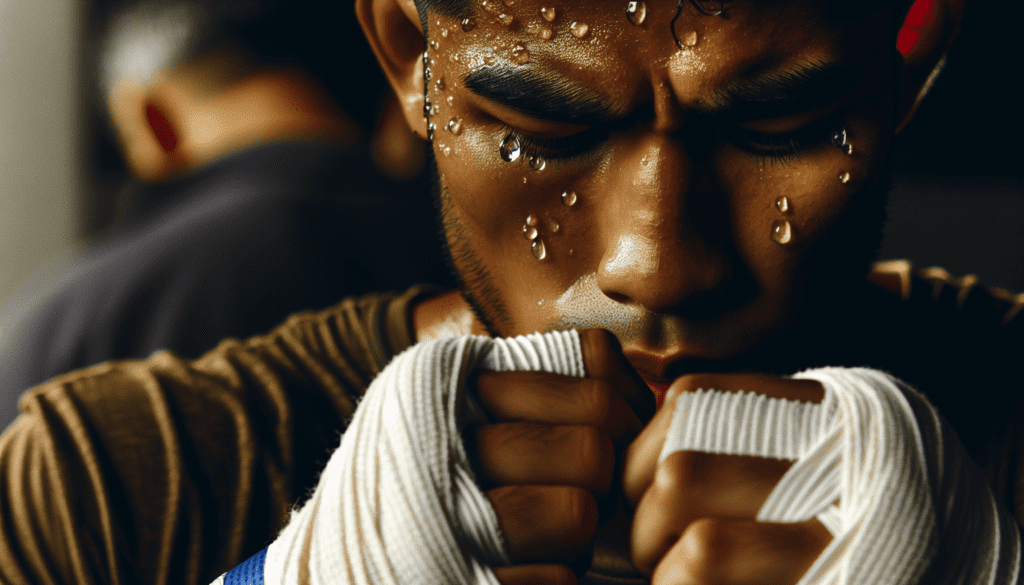Welcome to an insightful article on injury prevention for MMA fighters, specifically focusing on the impact of weight cutting. This practice is common in the sport of MMA, but many fighters may not realize the potential dangers associated with drastic weight cutting. By understanding the risks involved and implementing proper strategies, you can protect yourself from injuries and ensure a safer and healthier fighting career. Let’s dive into the importance of managing weight cutting effectively in order to prevent potential harm to your body. Have you ever wondered about the impact of weight cutting in MMA and how it affects injury prevention? Let’s dive into the world of combat sports and explore the potential risks and benefits of weight cutting, and how it can impact an athlete’s performance and overall well-being.
The Basics of Weight Cutting in MMA
Weight cutting is a common practice among MMA fighters where they intentionally lose weight in the days leading up to a fight in order to compete in a lower weight class. This is done through a combination of dehydration, reduced caloric intake, and sometimes extreme measures such as saunas or hot baths.
Why Do MMA Fighters Cut Weight?
MMA fighters cut weight for a variety of reasons, including gaining a size and strength advantage over their opponents, improving their performance by fighting at a lower weight class, and increasing their chances of winning. However, the practice of weight cutting can have serious consequences if not done properly.
The Dangers of Weight Cutting
While weight cutting can provide temporary advantages in terms of size and strength, it can also have negative effects on an athlete’s health and performance. Dehydration, nutrient deficiencies, and electrolyte imbalances are common side effects of weight cutting, which can lead to decreased energy levels, decreased muscle function, and an increased risk of injury during a fight.
Impact of Weight Cutting on Performance and Injury Risk
Performance Effects of Weight Cutting
When an MMA fighter cuts weight, they are essentially depleting their body of essential nutrients and fluids, which can have a negative impact on their performance in the cage. Dehydration can lead to decreased muscle endurance, reduced strength, and impaired cognitive function, all of which can affect an athlete’s ability to perform at their best during a fight.
Increased Risk of Injury
In addition to the negative impact on performance, weight cutting can also increase the risk of injury for MMA fighters. Dehydration and nutrient deficiencies can weaken muscles, bones, and connective tissues, making them more susceptible to injuries such as muscle strains, ligament tears, and fractures. This not only puts the athlete at risk during a fight but can also have long-term implications for their health and well-being.

Strategies for Safer Weight Cutting in MMA
Work with a Nutritionist
One of the most important steps in safely cutting weight in MMA is to work with a qualified nutritionist who can help develop a personalized plan based on the athlete’s individual needs and goals. A nutritionist can provide guidance on proper diet and hydration strategies, as well as monitor the athlete’s progress to ensure they are cutting weight in a safe and effective manner.
Gradual Weight Loss
Rather than resorting to extreme measures to cut weight quickly, MMA fighters should focus on gradual weight loss leading up to a fight. This can be achieved through a combination of proper diet, exercise, and hydration, allowing the athlete to achieve their desired weight without compromising their health and performance.
Rehydration and Refueling
After successfully making weight for a fight, it is crucial for MMA fighters to properly rehydrate and refuel their bodies in order to recover and perform at their best. This includes replenishing lost fluids and nutrients, as well as consuming a balanced meal to ensure optimal recovery and muscle repair.
The Role of Weight Classes in MMA
Importance of Weight Classes
Weight classes in MMA are designed to create a level playing field for fighters of similar size and weight, with the goal of promoting fair and competitive matchups. By competing in the appropriate weight class, athletes can avoid the need for extreme weight cutting and reduce the risk of injury and health complications associated with the practice.
Weight Class Guidelines
Each MMA organization has its own set of weight class guidelines, which dictate the upper and lower limits for each weight class. Fighters are required to weigh in before a fight to ensure they meet the weight requirements for their designated class, with penalties for those who fail to make weight.
Weight Cutting Regulations
In recent years, there has been a push for stricter regulations and monitoring of weight cutting practices in MMA, in order to protect the health and safety of fighters. Some organizations have implemented hydration testing and weight monitoring programs to prevent extreme weight cutting and reduce the risk of injury among athletes.

Conclusion
In conclusion, weight cutting is a common practice in MMA that can have both positive and negative effects on performance and injury prevention. While cutting weight can provide temporary advantages in terms of size and strength, it can also lead to serious health risks and increase the likelihood of injury during a fight. By working with a nutritionist, focusing on gradual weight loss, and following proper rehydration and refueling protocols, MMA fighters can safely cut weight and compete in a healthier and more sustainable way. Remember, your health and safety should always be the top priority in any combat sport.

